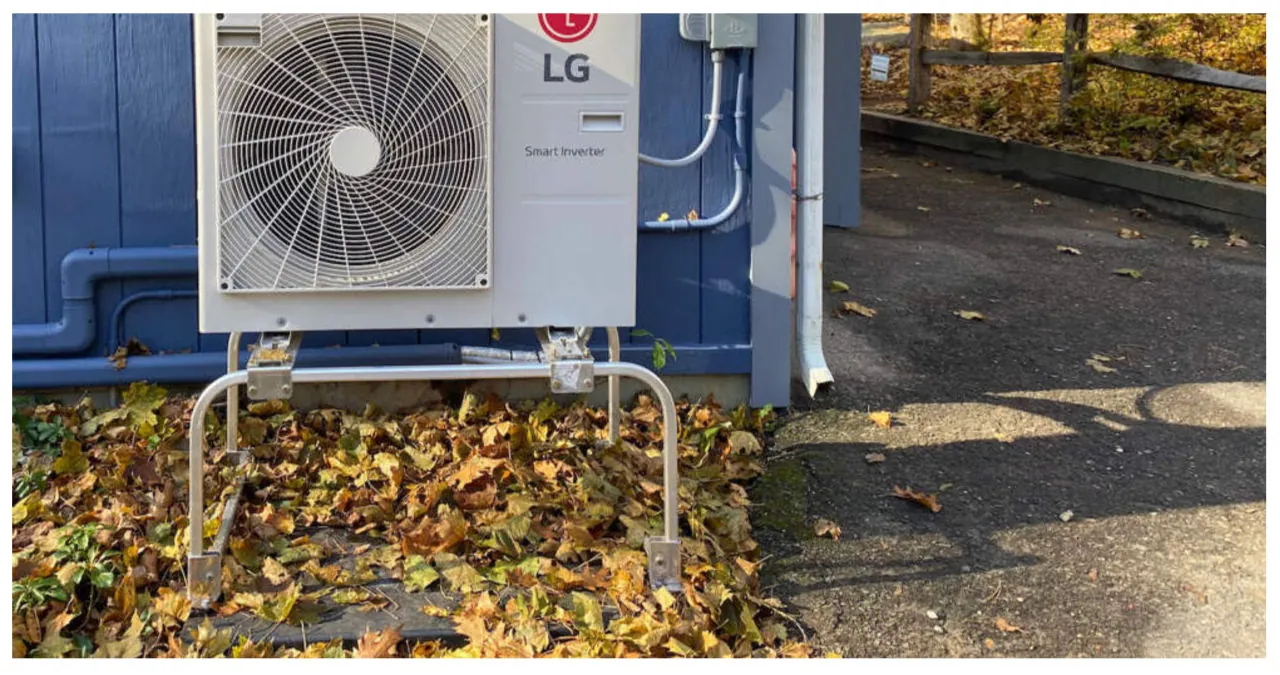In order for Massachusetts to achieve its clean energy and climate objectives, residents throughout the state will need to make significant adjustments in how they heat their homes in the coming years. The state is specifically calling for hundreds of thousands of homeowners and renters to transition from fossil fuel-based heating systems to electric heat pumps. This transition, as acknowledged by government officials and environmentalists, is not expected to be a simple or inexpensive endeavor.
Massachusetts is not the only state facing this challenge. A coalition of nine states has joined forces to promote the swift electrification of buildings.
In a recent agreement, nine states, including Massachusetts, California, Colorado, Maine, Maryland, New Jersey, New York, Oregon, and Rhode Island, have set an ambitious target for the adoption of electric heat pumps in residential HVAC and hot water heating systems. The goal is to have 65% of all new systems be electric heat pumps by 2030, with a further increase to 90% by 2040. This initiative aims to promote the transition towards more sustainable and energy-efficient heating solutions.
About 25% of the heating equipment sales in these states are heat pumps, according to Emily Levin, a senior policy advisor at the Northeast States for Coordinated Air Use Management. This association, which consists of air quality departments, has taken the lead in implementing this new initiative.
According to the spokesperson, the goals for sales represent a significant increase. However, she reassured that extensive modeling has been conducted to ensure that these goals are realistic and achievable.
Heat pumps, which operate in both heating and cooling modes, utilize electricity as their energy source. Unlike traditional air conditioning units, heat pumps have the capability to reverse their operation. Although not a novel technology, recent advancements in cold weather systems have made them invaluable for states like Massachusetts in their efforts to combat climate change.
Electric heat pumps offer a more efficient alternative to natural gas furnaces for heating homes in New England, despite the fact that over half of the region’s electricity is generated from burning fossil fuels, mainly natural gas. By opting for a heat pump, homeowners can significantly reduce their carbon emissions. Moreover, as the region continues to incorporate more renewable energy sources into its grid, the environmental advantages of heat pumps will further escalate.
Replacing fossil fuel-based heating systems with heat pumps not only helps in reducing statewide emissions but also brings significant health benefits to the residents. According to Levin, executive director of the organization, the existing heating systems in the nine states emit a substantial amount of nitrogen oxides and fine particulate matter, both of which are known to have negative impacts on health. The estimated emissions from these systems are over 138,000 tons of nitrogen oxides and 6,000 tons of fine particulate matter. On the other hand, heat pumps do not involve any on-site combustion, resulting in improved indoor air quality for the residents.
Wednesday’s announcement is a significant step forward in the commitment made by several states in September to quadruple heat pump installations by 2030. By putting this promise into writing, these states are sending a strong signal to heat pump manufacturers and installers that they are fully dedicated to this technology and will actively support its widespread adoption.
Levin emphasized that the immediate objective is to encourage manufacturers to invest in heat pump production to meet the anticipated demand. However, he also stressed the long-term goal of making the purchase and installation of heat pump equipment more affordable.
Massachusetts already offers incentives for heat pump installations through its energy efficiency program, Mass Save. Additionally, residents can benefit from the generous federal tax credits established under the 2022 Inflation Reduction Act. However, the initial cost of transitioning to heat pumps can be overwhelming for numerous homeowners.
State officials informed WBUR via email that the memorandum of understanding aligns with the state’s clean energy and climate plan. They expressed the hope that collaborating with other states will help expedite the transition to heat pumps.
Rebecca Tepper, the state’s secretary of energy and environmental affairs, emphasized the importance of collaborating with other states to transition towards zero-emission buildings. She highlighted that this partnership not only advances their work but also builds on their longstanding collaboration to address climate change, reduce air pollution, improve public health, and promote sustainability.
Massachusetts is home to around 2.6 million households, with a staggering 80% relying on fossil fuels for heating. These buildings collectively contribute to about 35% of the state’s annual emissions, making them the second-largest contributor to greenhouse gas pollution, right after the transportation sector.
Massachusetts has set ambitious targets in its climate plan to electrify households. By 2025, the aim is to have 26% of households using electricity, and this figure is set to increase to 38% by 2030. To achieve these goals, it is estimated that around 100,000 heat pumps will need to be installed by 2025, and a staggering 500,000 by 2030. A recent state analysis report indicates that Massachusetts is on track to meet the 2025 target, but there will need to be a significant increase in the adoption of heat pumps to meet the 2030 goal.
According to recent preliminary data from Mass Save, there seems to be an upward trend in sales. The data reveals that between 2019 and 2022, a total of 23,585 homes claimed rebates for installing heat pumps. In comparison, records of heat pump rebates indicate that over 25,000 homes had these systems installed just last year.
The state hopes that this upward trend will persist, resulting in a total of 62,000 installations by 2030.
Read More:
- Texas Spends $124 Million to Transport Migrants to Cities Governed by Democrats
- Officials enraged by new law imposing $15 daily fee for drivers entering major US city, labeling it a self-centered cash grab

